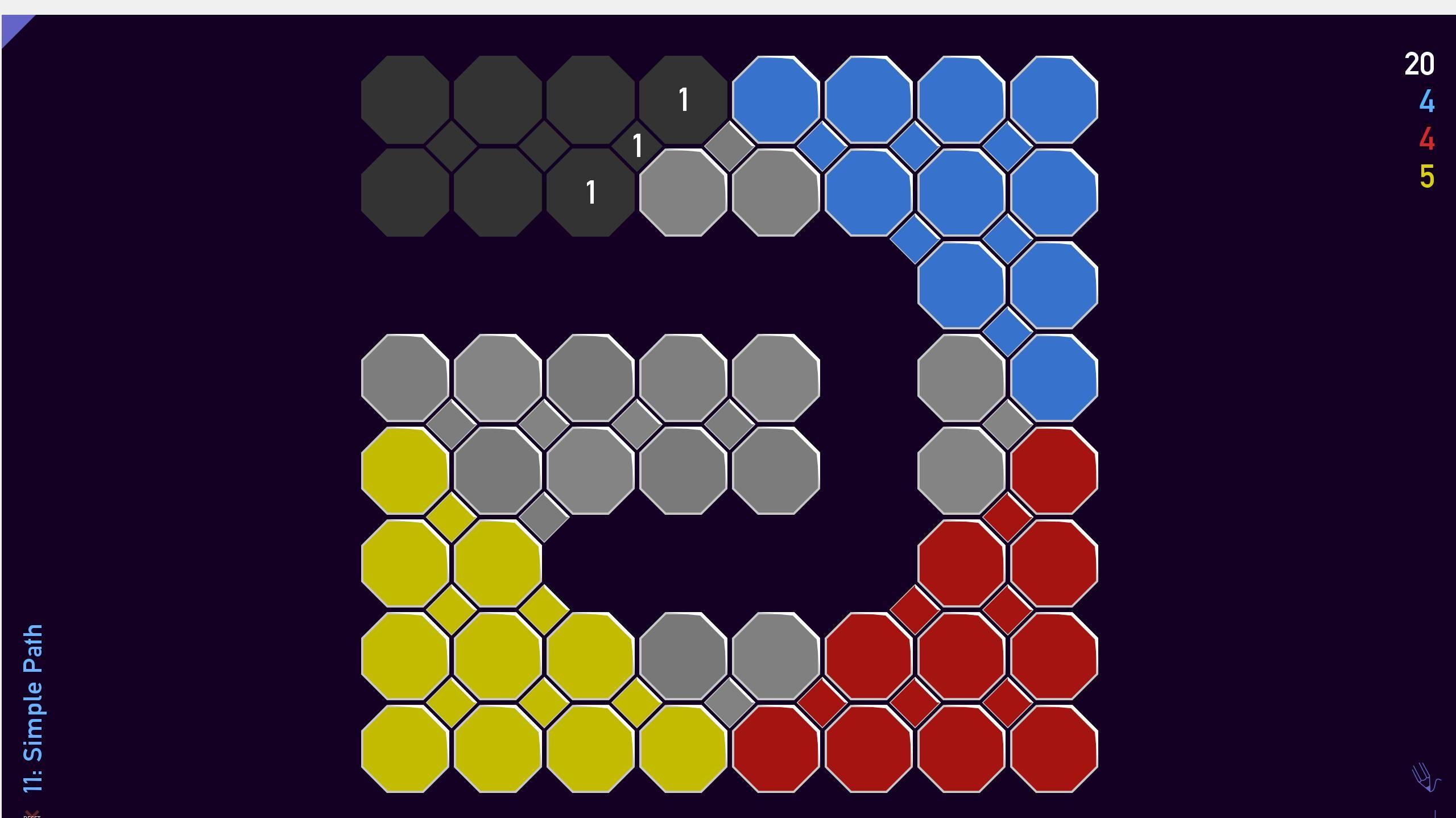For this week’s critical play, I played Tametsi, one of my favorite puzzle games of all time. Being composed out of hard logic puzzles, and minimal in its design, the target audience for Tametsi is largely puzzle game enthusiasts who enjoy challenging logic-based gameplay. It’s an ideal game for those who appreciate a slower pace and don’t mind spending a lot of time on each level, embracing the challenge and the inevitable fact of eventually getting stuck. Unfortunately, the game is only available on PC’s through Steam.
Even though the game’s puzzle mechanics are simple, they are pivotal for the experience of the game. First and foremost, the game has no characters, and no story, it is simply a sequence of puzzles, where players solve grids to unlock following grids. This decision already truly embraces the focus Tametsi has on pure logic. In terms of its mechanics, the game is quite similar to minesweeper: the only two Formal Procedures one can do in Tametsi are (1) right click a tile to mark it as a bomb, and (2) left click a tile to reveal a number representing how many bombs touch that tile. Yet, from these mechanics, the game creates extremely complex logical deduction puzzles. Some of them are quite beautiful and leave someone who has stepped through the process of solving the puzzle in awe of how the creators have thought about taking one through this puzzle(almost as a journey). The minimalist design that arises from these simple mechanics are also translated in the game’s interface, leaving players to engage solely with their logic.
Since the game’s main focus are these puzzles, it truy doubles down on Challenge as a type of fun. However, I would like to argue that the game utilizes both Submission and Sensation to transform its challenges into even more fun and satisfying accomplishments. For example, by not having timers, and creating puzzles that are inherently very long, players submit themselves to spend countless hours with each puzzle almost as a pass time (at least I do). And, some design decisions that became apparent to me now after our sound lecture, involved how clicking each tile has a small sound associated with it. This sound is extremely simple, but it perfectly fits into the minimalist approach of the game and creates such a satisfying pleasurable experience that is coupled with the achievement of successfully uncovering one more tile to solve the puzzle.
However, when playing with my friend, I noticed that the game does fail in creating a friendly onboarding for those that aren’t very experienced with the genre. Even though this doesn’t necessarily need to be the case (due to the game’s target audience), I still feel that it could perhaps do a better job in onboarding, and also perhaps create a mode where hints are allowed to help those players that get too stressed with the feeling of being stuck. For example, my friend quickly wanted to stop playing once no progress occurred after a couple of minutes of us staring at the grid!




